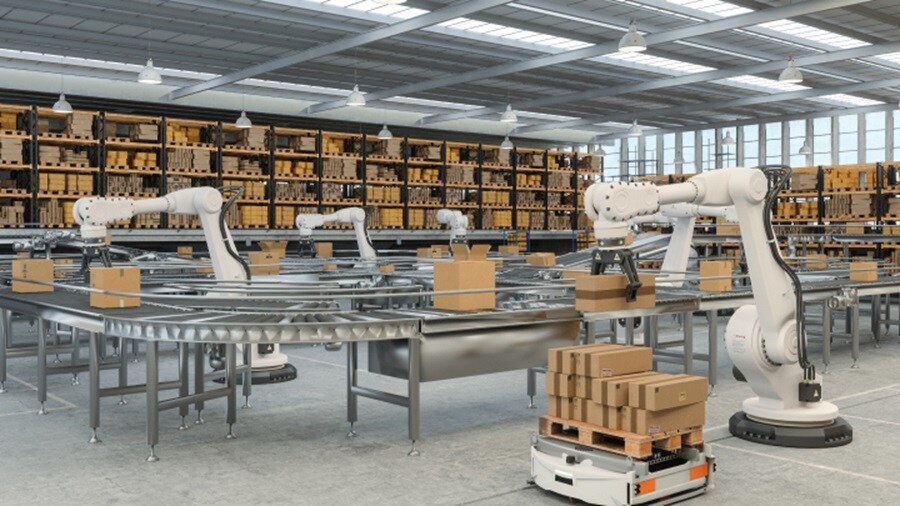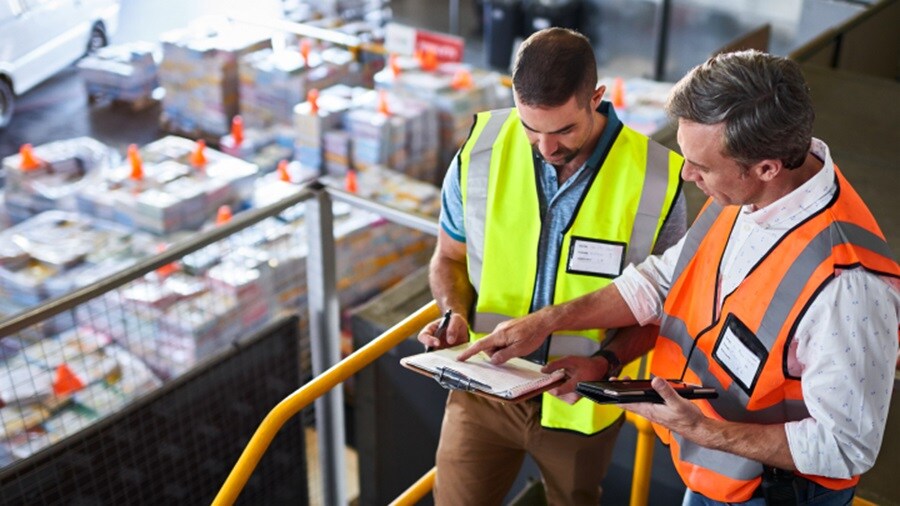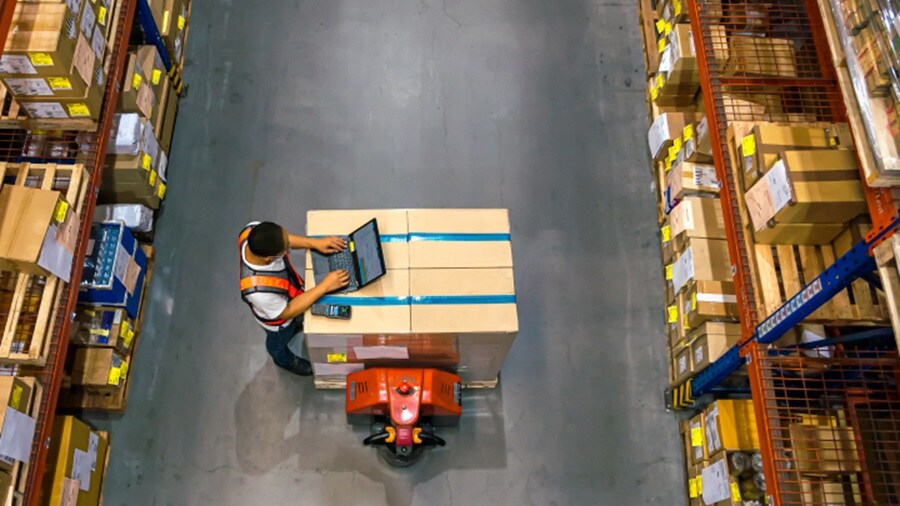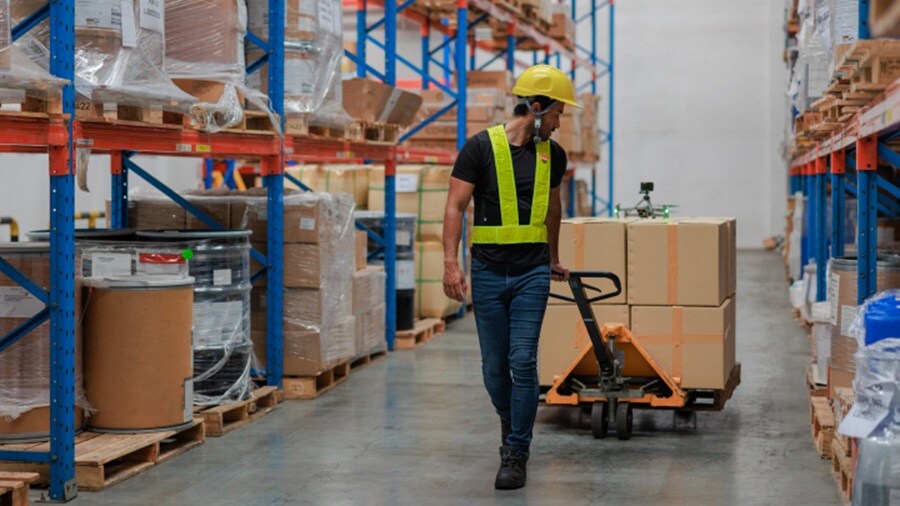The global logistics industry is currently faced with significant challenges, but few areas in Europe are dealing with such complex factors as the UK. When it left the European Union in January 2021, new regulations, enhanced costs and other newfound complexities plagued its shores and continue to do so even two years after Brexit was made official.
Add that to ripple effects of pre-Brexit stock building, labour shortages, frequent strike action, soaring inflation and the situation in Ukraine, and the need for supply chain solutions that add resilience, flexibility and control to UK logisitcs becomes very apparent.
As Maersk continues along the path as an integrator of logistics, it is looking to help build these solutions by being an end-to-end partner connecting factories at origin through to end delivery – with our series of newly built warehouses playing a fundamental role.
Modern warehouses to overcome disruptions

Companies in the UK are in need of flexible and timely solutions to combat logistics complexities, particularly when it comes to warehousing. It’s crucial that these options not only address immediate storage needs, but also prioritise sustainability right from the start.
Therefore, integrating supply chain operations and looking to ease the issues associated with UK trade in mind, Maersk has developed a whole setup of possible solutions across the UK, including the East Midlands Gateway campus.
Integrating UK supply chains means connecting the dots of logistics for both import and export from one source.
As the campus is home to a 695,000 sq ft warehouse, a rail terminal operated by Maritime and soon a 14-acre container depot – all within the boundaries of a freeport – the infrastructure is in place to do exactly that.
It’s also paramount that an integrated solution is located centrally with good access to the UK’s five major ports (Felixstowe, Liverpool, London, Southampton, Immingham), the rail/road network and key airports – and East Midlands Gateway ticks that box, too.
How to remain flexible and resilient

UK supply chains have traditionally been somewhat rigid and onedimensional in the past, with shipments sent on routes defined a long time in advance without much scope for flexibility in transit. East Midlands Gateway allows customers to move goods into the UK at speed primarily, with the opportunity to make secondary decisions on future moves as market situations dictate. That means you’re able to avoid any bottlenecks that could slow shipments down at the time and ultimately reach the end consumer faster.
For example, if you have a stockholding in the East Midlands Gateway warehouse, you can use its connectivity to respond to consumer demand quickly and get stock where you need it.
At the same time, demand may not marry perfectly with supply and companies could be at risk of overstocking in certain areas without slowing down their supply chain. What Maersk is able to do at East Midlands Gateway is draw out the process and hold containers until they’re required by the market. Having a more free-flowing and integrated supply chain married with warehouse solutions adds flexibility to where cargo spends its time in storage, which could potentially save money on high Detention and Demurrage costs at ports.
Another key advantage to the East Midlands Gateway campus is the fact that it serves as a freeport zone in the UK. Most goods imported into UK freeports are exempt from taxes, which means tariffs are only paid to the government if products leave the site to go elsewhere in the UK. If businesses need to re-export goods overseas, then they’re able to do so without UK duties being paid – avoiding the dreaded ‘double duty’ situation.
It also means that when goods arrive into UK airports or ports bound for East Midlands Gateway, they’re expedited immediately via rail directly to the campus without going through lengthy customs clearance processes. This gives customers more predictability on cargo and gets it into storage as quickly as possible before starting its next leg from within the connected campus.
Sustainability: more than decarbonisation

Maersk is building new facilities to net-zero specifications and ensures operations run in the most sustainable way possible, supporting the company’s ambitions to deliver net-zero emissions by 2040.
When looking at sustainability levels of warehousing operations, it goes beyond just decarbonization – as two main factors need to be taken into consideration. To start with, all energy usage within the warehouse should be electric, and more efficient than conventional sources such as gas.
Second, all the energy used should be sourced from renewable sources, either on-site or external.
While using an external, renewable energy provider will reduce the greenhouse gas (GHG) emissions of a warehouse, producing it onsite will create additionality.
Additionality means that by producing our own renewable energy, we are adding and enabling new capacity to the grid, instead of using energy that is already there through an existing provider.
Energy-efficiency warehouses like these allow for operational sustainability without compromising the level of service or having a negative impact on customers’ goods – they are still stored in the same conditions and handled with the same efficiency as they would be using conventional warehouses.
New glulam warehouse in Dublin

To further expand Maersk’s warehousing network, a new state-of-the-art facility will be added in Dublin, Ireland, this summer – constructed to net-zero specifications with a glue-laminated (‘glulam’) timber structure. Glulam is composed of wood laminations bonded together with durable, moisture-resistant adhesives and carries a vast range of sustainability benefits.
The new facility will be located in the north-west area of Dublin with good links to international airports and the ocean network.
Thanks to a narrow aisle warehouse design, the facility offers optimised storage density with 6,196 square meters of floor space.
The glulam frame option, meanwhile, results in a carbon reduction of 689 tonnes for the warehouse frame and 90 tonnes for the office structure. The warehouse is part of the Quantum Logistics Park which will be landscaped to premium standards, incorporating nature through 750 trees and 40,000 shrubs.
On-site renewable energy can be generated by roof-mounted photovoltaic panels with a capacity of 150,000 kWh/year, plus there’s advanced submetering infrastructure for ongoing energy management and verification. Other environmentally friendly factors include efficient LED lighting, rainwater harvesting or electric vehicle charging stations in the car parks.
While it is difficult to predict where bottlenecks and issues will occur, optimising resilience, flexibility and control means customers are in the best place possible to minimise the impact on their supply chain when called into action.
The UK is undoubtedly braced for a challenging year ahead in the logistics world – but with facilities such as East Midlands Gateway or the glulam warehouse in Dublin, businesses have the flexibility to make decisions as market circumstances dictate and show resilience in the face of adversity from one connected hub - all the while being more cost-efficient and environmentally friendly along the way.
To know more about modern sustainable warehousing, meet our experts at Multimodal 2023.
无论您需要什么,我们都可以随时为您提供帮助
I agree to receive logistics related news and marketing updates by email, phone, messaging services (e.g. WhatsApp) and other digital platforms, including but not limited to social media (e.g., LinkedIn) from A. P. Moller-Maersk and its affiliated companies (see latest company overview). I understand that I can opt out of such Maersk communications at any time by clicking the unsubscribe link. To see how we use your personal data, please read our Privacy Notification.
By completing this form, you confirm that you agree to the use of your personal data by Maersk as described in our Privacy Notification.
